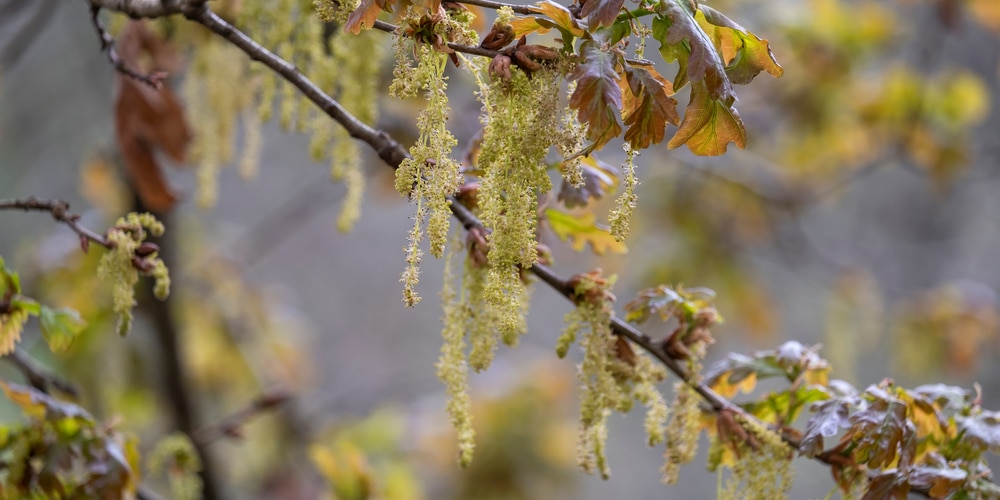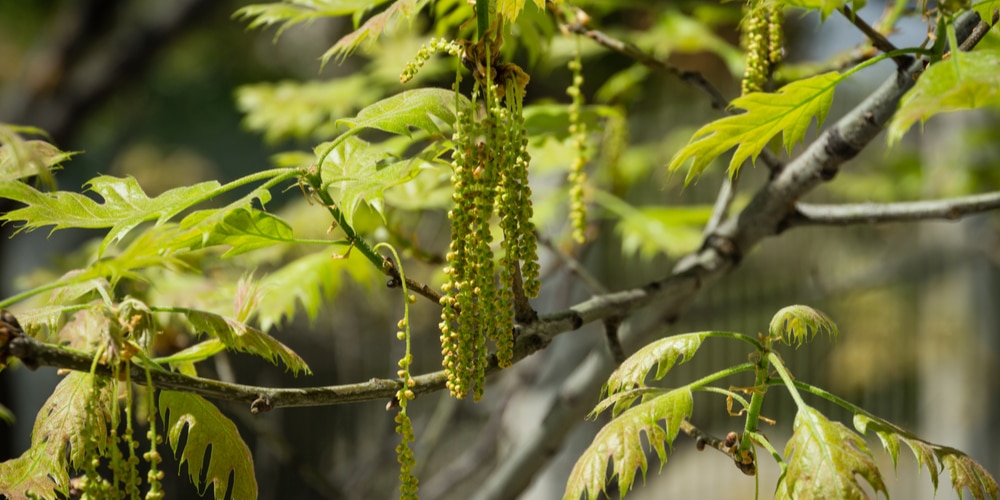Every flowering tree requires reproductive parts to propagate, and so do oaks. Have you ever seen an oak tree with catkins? While most plants have stamens and pistils on separate male and female trees, oaks mostly bundle them up together.
It’s typical to notice some tassel-like extensions hanging from most tree species, including Alders, Hazels, and Silver Birches. These gracefully hanging droops are called catkins and are the male plant reproductive parts responsible for producing pollen.
This article offers insight into oak catkins and lists the oak trees that have them
Oak Catkins: What are They?
Catkins usually appear like tassels hanging from trees and are generally yellow-tinged or green. They typically produce and carry pollens, which the wind blows to the female flowers, mainly on the same tree.
Catkins usually develop in autumn when oaks start shedding leaves, and it’s generally about the period when pollination occurs.
Oaks are mostly wind- and self-pollinated, meaning that their male and female flowers exist on the same tree – referred to as Monoecism.
Oak tree with catkins
Most oak trees have catkins, but not all. These catkins are essentially the oak trees’ lifeline since they produce pollen to help them reproduce.
Oak fruits (or Acorns) usually emanate from the fertilized female flowers and typically contain tannin.
They fall off the trees when ripe, and animals disperse them to germinate elsewhere after ingesting. Here are the oak trees that have catkins.
1. Sessile Oak (Quernus Petraea)
Sessile oaks, also commonly known as Irish oaks, grow in most parts of the European countries, including the wild semi-natural woodlands of Wales and England.
They usually develop catkins in autumn as they flower and reproduce. These catkins generally droop from the branches, mainly towards the tips, and are green to pale yellow. When the wind blows, it dislodges the pollen embedded within the furry tassels and carries them to the female flowers for pollination.
2. Pedunculate Oak (Quercus Robur)
The pedunculate oaks grow in the state of Arizona, Alaska, California, and Arkansas, United States, but are widely dispersed across Europe. They also develop catkins towards autumn when they start shedding their leaves and prepping for pollination.
The catkins are usually elongated and appear green to yellow. Sometimes, they bundle together, forming a dense cluster, and drop off once they stop producing pollen.
3. Black oak (Quercus velutina)
Most oaks belonging to this group also have catkins that develop when the tree is about to reproduce. They’re native to the United States and most found in every state.
Like most oak trees, they’re monoecious and have catkins that mostly appear when the trees have shed their leaves and just before they shoot. Their acorns are uniquely elongated and appear right after pollination.
4. Texas Live Oak (Quercus fusiformis)
The Texas Live Oak, also known as the Escarpment Live Oak, mainly grows in Coahuila, glass, and Arbuckle Mountains from southern Oklahoma to Texas. It’s a nearly evergreen oak species and also develops catkins, essential for pollination and reproduction.
The catkins are usually greenish-brown and droop individually but can sometimes be pale yellow and clustered.
5. Red Oak (Quercus Shumardi)
Red oaks are native to North America, from the Atlantic coastal plain in North Carolina to Florida. Their catkins are usually yellow and bundled and carry pollen to fertilize the bud-like female flowers.
Their acorns are plump-shaped and are only edible for squirrels and most rodents when they’re ripe or dry. During the early springs, these catkins drop and litter the ground beneath and turn the ground brown when they dry up.
6. Bur Oak (Quercus macrocarpa)
Bur oaks are a common Quercus species native to Eastern North America and virtually scrub-like during its early stages.
However, the tree usually grows to full size producing catkins measuring about five inches long. The catkins are usually yellow-tinged and appear in clusters as they dislodge pollen that the wind blows from them.
These catkins bloom as the leaves develop in the early springs and fall off after pollinating the pistils.
Oak tree with catkins: Conclusion
Oak trees with catkins are incredibly stunning and add an aesthetic touch to farm fields and home gardens. And most of them change their leaf colors in various seasons of the year, but some are consistently evergreen.
These trees are primarily monoecious and grow catkins for pollen production. It’s through these long, drooping tassels where oaks get their lifelines.
Related Article: How Much Does an Oak Tree Cost?

